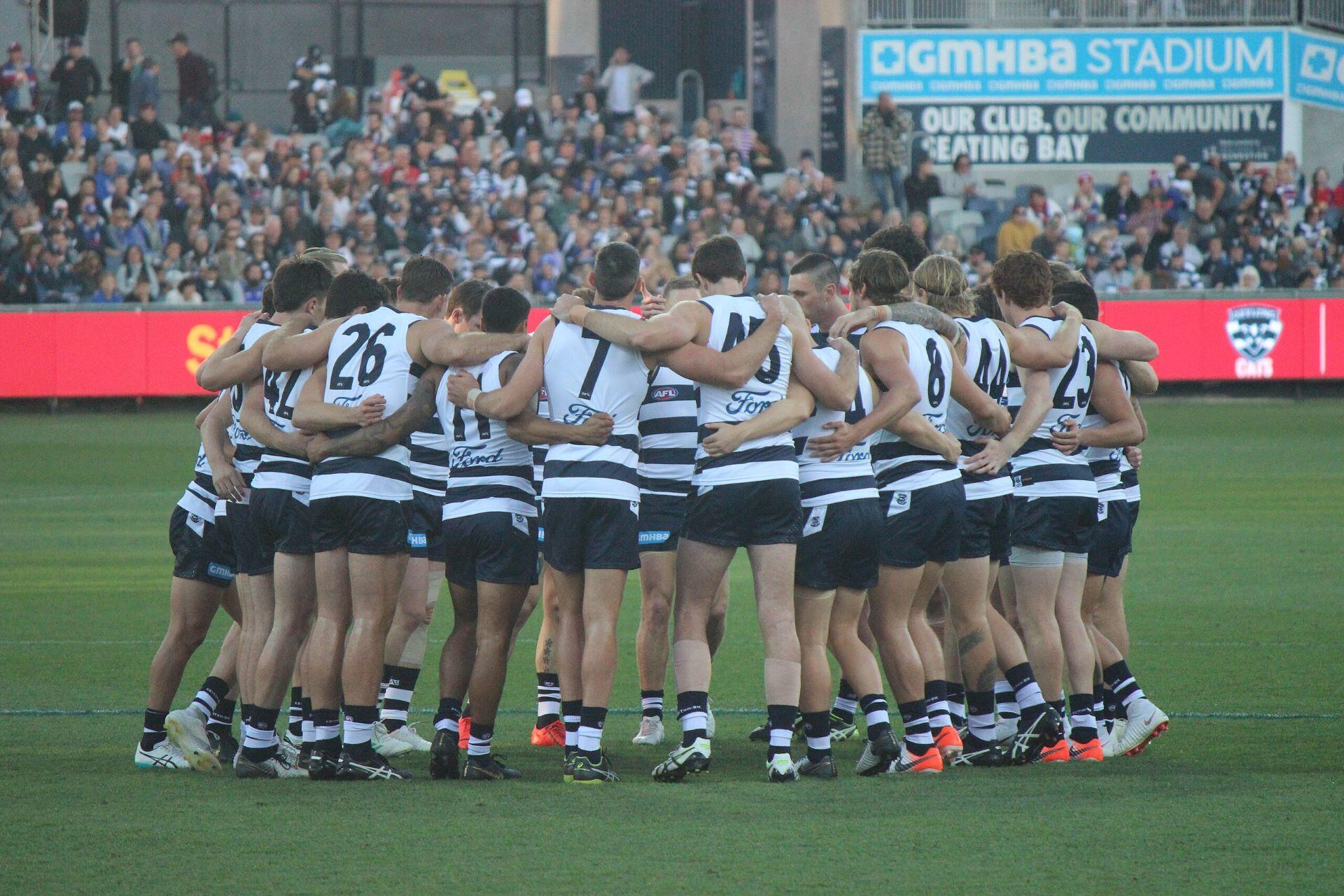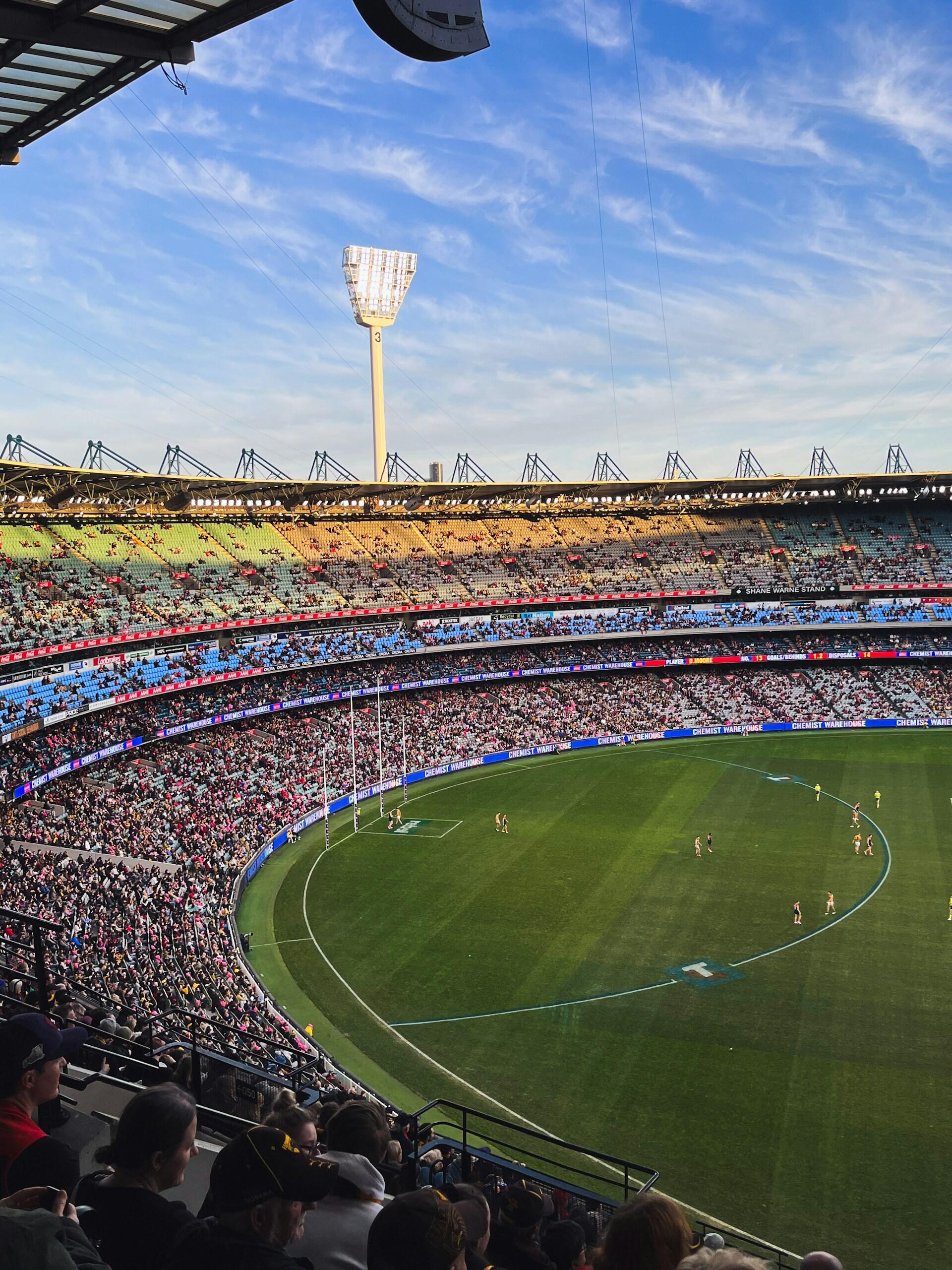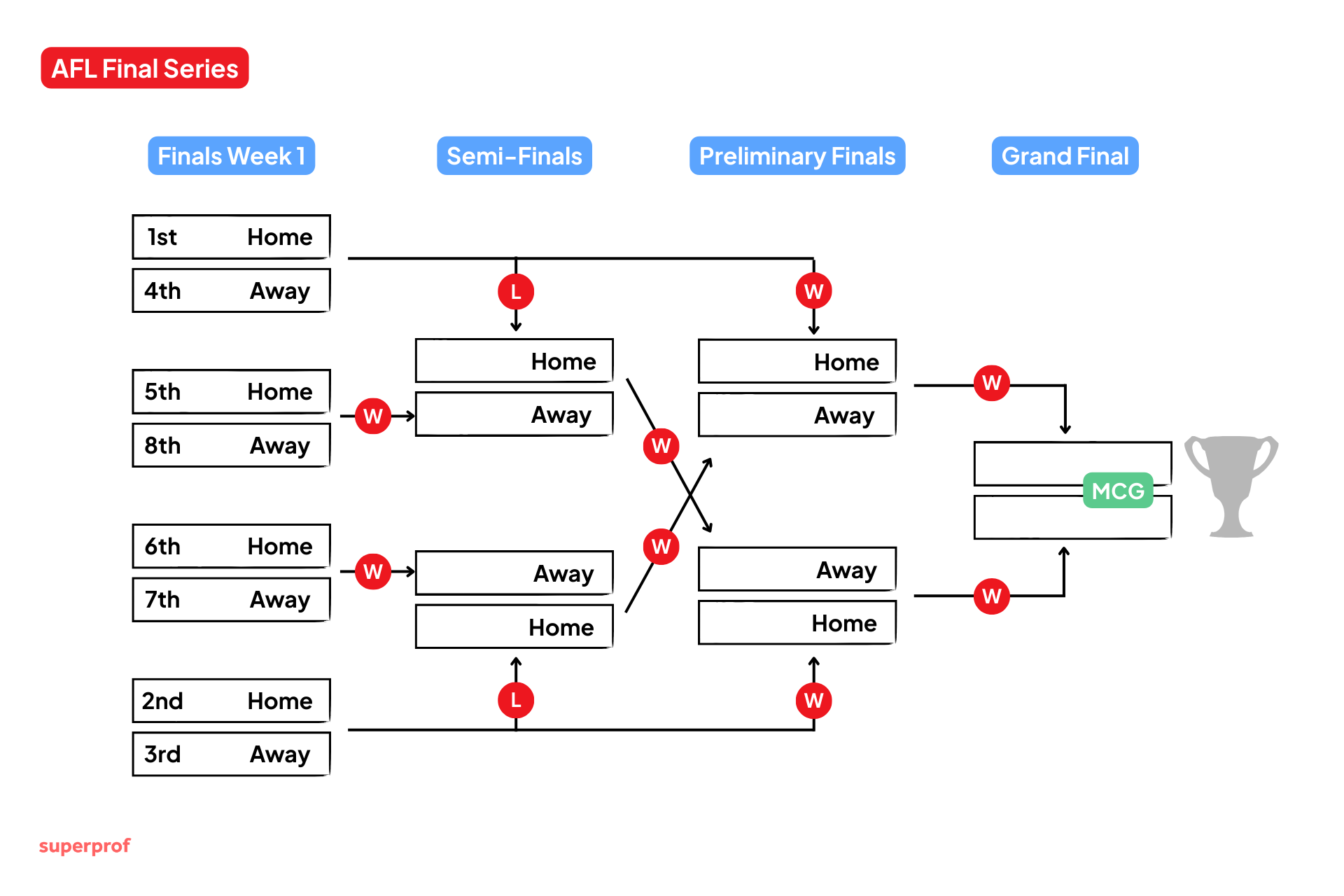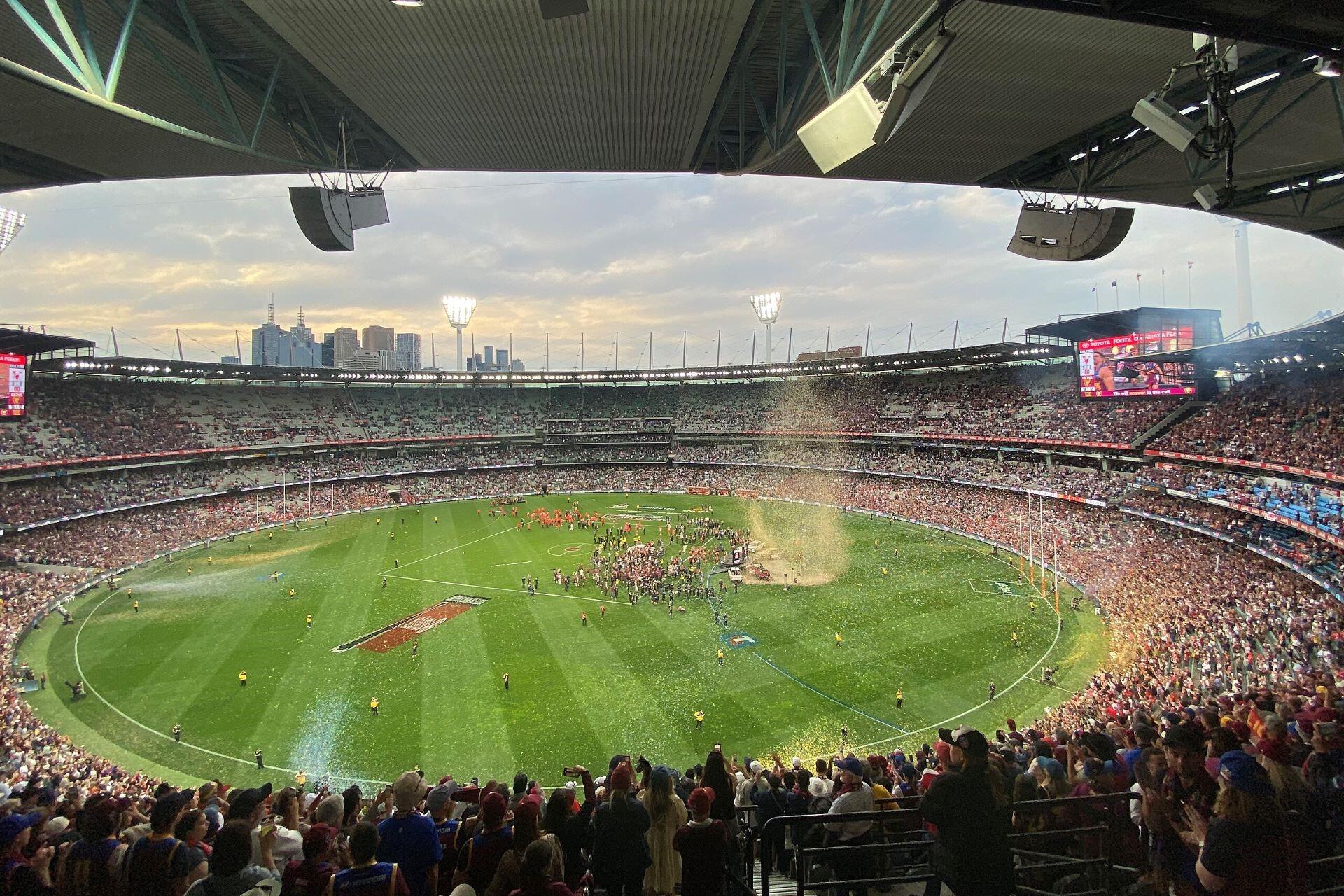The AFL Finals Series is easily one of the most exciting times of the Australian sporting calendar. So, how does the AFL Finals Series work, and what is it? Since 2000, the league has used the Final Eight System, which is a four-week tournament in September that rewards the top clubs of the regular season while giving each of the eight teams a chance of reaching the AFL Grand Final. Here, we'll look at how it works.
Key Takeaways
- The AFL Finals Series has used the Final Eight System since 2000 and runs for four weeks in September.
- Eight teams qualify: the top four get a double chance, while fifth to eighth face knockout elimination from the start.
- Drawn matches: since 2016, all finals use extra time and “golden score” if required; before that, Grand Finals were replayed.
- The system ensures fairness (rewards top teams), opportunity (all eight have a path), and spectacle (sudden-death drama for fans).

How Does the AFL Finals Series Work?
The AFL Finals Series is the tournament that decides who'll be crowned premiership winner at the end of the season. The tournament lasts four weeks, and each year, the top eight teams qualify for the finals. This format has been in place since the year 2000 and is also called the Final Eight System.
The Finals Series is designed so that the best clubs from the home-and-away season get a second chance if they lose in the opening week. However, lower-ranked sides face sudden-death elimination. Across September, this builds towards the AFL Grand Final, which is played at the MCG in Melbourne.
Info: The team that finishes on top of the ladder at the end of the home-and-away season is crowned the minor premiers. This title recognises consistency across the season, but it doesn't guarantee Grand Final success. In fact, some minor premiers have gone on to miss the Grand Final altogether. The ultimate prize, the AFL Premiership, only goes to the winner of the Grand Final.
Week 1: Qualifying Finals vs Elimination Finals
The first week of the AFL Finals Series features four matches. These are split between the top four teams and the clubs that placed from fifth to eighth on the ladder. The system rewards clubs that finish higher up at the top of the ladder by giving them a second opportunity if they falter early. This is relatively unique in sporting leagues.
Qualifying Finals (Top Four Teams)
Elimination Finals (Fifth to Eighth)
Teams know that one bad game can end their premiership hopes. Conversely, a win can spark the momentum they need to reach the end of September. While the higher-ranked teams have a second chance, they don't really want to have to play extra matches on their route to the premiership.
Week 2: AFL Semi-Finals Explained
The semi-finals take place in the second week of the AFL Finals Series. By this point, two clubs are already eliminated. At the same time, the top four teams still have the advantage they earned during the regular season. These games are sudden-death contests. Winners move through to the preliminary finals while losers are eliminated from the series.
The semi-finals produce some of the most gripping matches of September football. This is where higher-ranked clubs are fighting to keep their season alive, whereas underdogs are looking to cause an upset.


Week 3: AFL Preliminary Final Meaning
The preliminary finals often produce an electric atmosphere. These decide who plays in the AFL Grand Final. Expect some intense games.
The preliminary finals are sometimes called the “final four” stage. The stakes couldn't be higher. This match takes you to the Grand Final. A loss will put an end to your season.
Week 4: Who Plays in the AFL Grand Final?
At the end of the four-week finals series, the two preliminary final winners meet to decide who will be crowned the premiership team for the season.

This is traditionally held on the last Saturday in September at the Melbourne Cricket Ground (MCG).
The only exceptions were during the COVID-19 pandemic, when the matches were held at the Gabba in Brisbane (2020) and Optus Stadium in Perth (2021). The Grand Final is the biggest day on the Australian sporting calendar.
This is more than just a football match. Over 100,000 fans pack into the stadium with millions more watching at home. The build-up includes the Grand Final Parade, half-time entertainment, and special presentations.
For the players, this is their chance to make AFL history by lifting the premiership cup. Fans get to witness the end of the season-long journey that started back in March.

What Happens if an AFL Final is Drawn?
It's rare, but AFL finals can finish with the scores level at the end. There are rules for handling a draw. These were overhauled in 2016, but here's how they were both before and after the change.
Before 2016
Since 2016
The 2010 AFL Grand Final between Collingwood and St Kilda ended in a dramatic draw, with both teams tied at 68 points each. More than 100,000 fans had to return the following Saturday for the replay, where Collingwood dominated to win by 56 points. This was the last replay in VFL/AFL history, as the rules changed in 2016 to introduce extra time and golden score.
Why the AFL Uses the Final 8 System
The AFL adopted the Final Eight System in 2000 as a way to balance knockout drama with the balance of rewarding the best teams throughout the season. It's similar to systems seen in many North American sports, where the teams topping the standings at the end of a regular season end up in a playoff series. There's a reward for making the playoffs (or the AFL Finals in this case), and an even bigger prize on the line at the very end of it all.

While it can be frustrating for the team that finishes the season in first to not go on to win the premiership, the AFL Finals format ensures that even runaway leaders in the ladder know that they still have to perform throughout September to be crowned champions. It also keeps fans more engaged right until the end of the season and provides an excellent match at the end.















